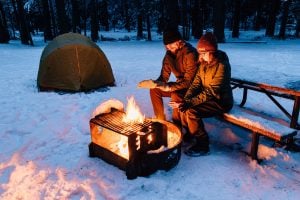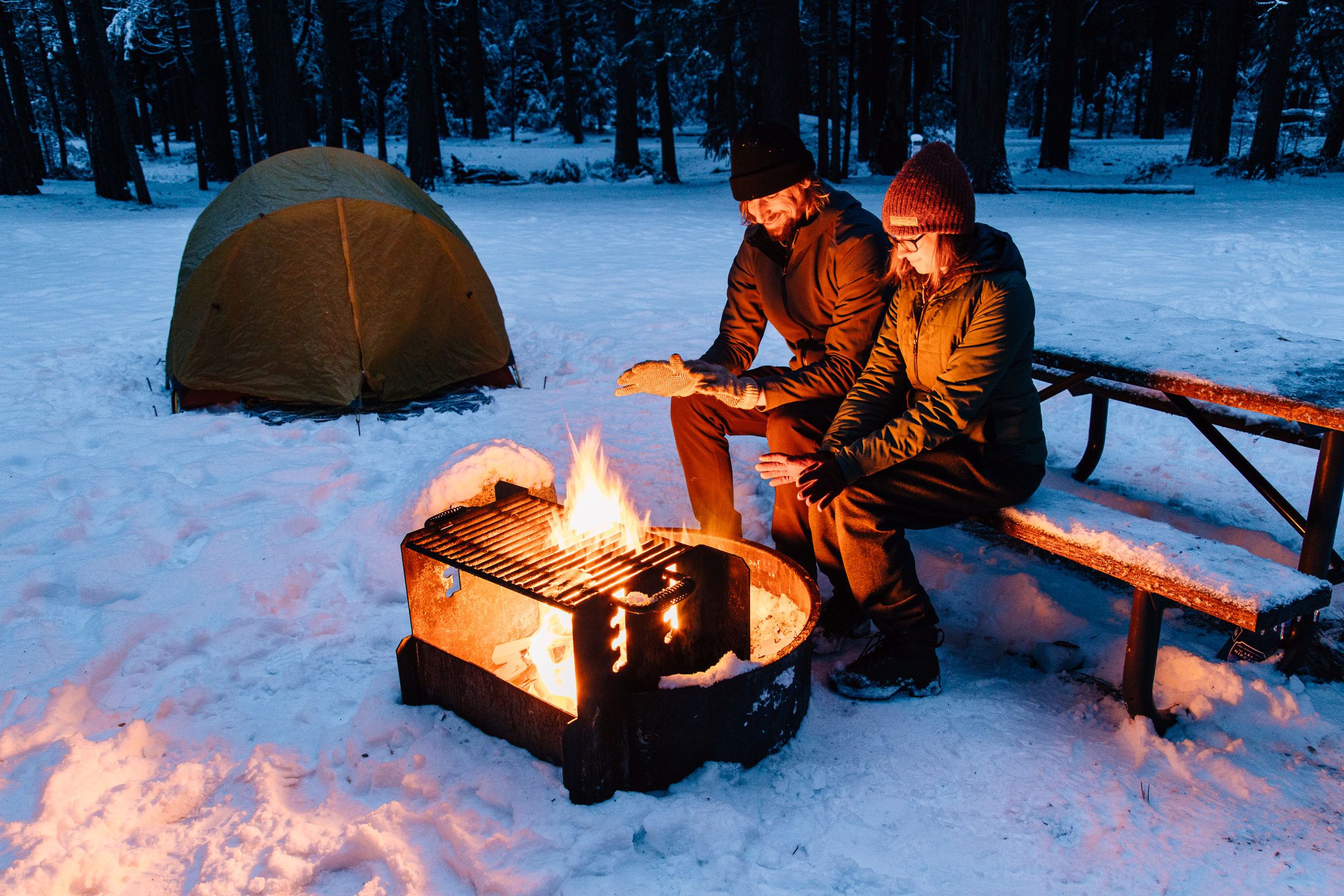[message_box type=”note” icon=”yes”]Check out more tips on traveling and join the conversation on our forums. Open Forums[/message_box]

I’ve gone winter camping a few times in Alaska where I grew up and they were certainly memorable, to say the least. I’ll never forget the time I hiked Flattop Mountain, a popular destination in the Anchorage area (more info here), and camped on the top in the dead of winter. Even with a space blanket, a very expensive sleeping bag, long johns, a wool beanie, and the warmest sweater and sweatpants my teenage money could buy, I still froze my ass off all night. I swore I’d never do that again.
The reality is, winter camping is without a doubt its own type of animal. Most people don’t winter camp just for the hell of it. Instead, it’s usually just an aspect of pursuing your other epic outdoor winter adventures such as backcountry skiing, winter hunting (e.g. deer or elk), or mountaineering. With this in mind, we’ve compiled this winter camping checklist to ensure your safety, survival, and basic comfort out in the elements. Stay safe friends!
1. Insulation
Without a doubt, this is the most important piece of enjoying your winter camping trip. Humans don’t naturally do well in cold climates so staying warm is essential to survival. You should have the following:
-Warm underlayers (long johns and wool socks)
-Warm outerwear (sweater, pants, vest, jacket)
-Hat and gloves
-Inflatable sleeping pad (cushion of air beneath you helps trap heat)
-Cold-rated sleeping bag (make sure it’s rated beyond the low temperatures you’re expecting)
-Space blanket (just in case)
2. Fire
It’s hard to stay warm outside when you are camping in the winter time if you don’t have a fire. Heck! It’s hard to stay warm even in the summer, especially if you are camping at higher elevations, so you always want to carry backups in case one source of fire does not work. You need:
-Matches or lighter
-Waterproof container
-Firestarter (flint or something similar)
3. Shelter
Either a tent or hammock will get the job done. I’m personally a huge fan of hammock camping because it’s all around a lot more comfortable, easier to carry and set up, and can be rigged above ground you otherwise wouldn’t want to put a tent. If take a hammock winter camping, however, you should make sure you have a fully enclosed hammock so you aren’t exposed to the cold wind/air and can stay better insulated sleeping in it at night.
4. Repair Kit & Tools
You never know when something might break or go wrong so always have a repair kit and some tools nearby to patch up gear or jury-rig another tool. You should have:
-Knife or multitool
-Kits for your camp stove, tent, and sleeping pad.
-Duct tape
5. First Aid Kit
Being exposed to the elements and far from any hospital means a higher risk of injury and complications from that injury so keep a first aid kit with you at all times. REI, put together this excellent First Aid Kit Checklist and here you can shop one of Amazon’s best travel first aid kits.
6. Illumination
Let’s face it, it’s dark a lot in the winter time, especially in the more northern parts of North America so illumination is necessary when your big cozy fire is not sufficient. You should have:
-Headlamp (for anything that requires two hands)
-Backup flashlight
-Backup batteries
7. Hydration
For the sake of not lugging tons of heavy water around on your trip, invest in a good water filtration system and simply refill your water bottles in a nearby stream or river to your campsite. Another option, if there’s a decent amount of snow on the ground, is to bring some snow to a rolling boil and hold it there for one minute to purify it.
8. Sun protection
If there’s snow on the ground and it’s sunny, your exposure to UV rays is even higher than laying on a beach in Hawaii. Snow is highly reflective of the sun so keep some sunscreen, sunglasses, and SPF lip balm on hand if needed.
9. Food
Outside of your standard planned fare, it’s always wise to have an extra day’s worth of food just in case. Winter camping means burning a lot more calories to stay warm so keeping backup rations is never a bad idea.
10. Navigation
Have some backups other than the phone. Chances are, you won’t even have cell reception so make sure you have a map and compass as backups for the digital devices.


